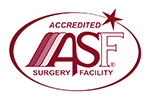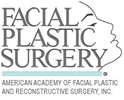Understanding Cleft Palate

An estimated 7,000 babies in the United States are born with cleft palate, a birth defect that involves an opening (or “cleft”) in the roof of the mouth. Unfortunately, cleft palate can lead to several serious setbacks including those related to dentition, eating, drinking, speech and even hearing. The only treatment option is cleft palate repair surgery.
What Causes Cleft Palate
Cleft palate occurs during the first trimester of pregnancy when the bones and tissues of the baby’s mouth should form. This includes the roof of the mouth coming together as well as the formation of the nose, upper jaw and upper lip. When the palate fails to close properly to form a cleft, it creates a hole between the nose and the mouth, which can be the most detrimental to a child’s development and everyday functions.
While we do not have a clear or confirmed understanding of what causes cleft palate, scientists do believe a combination of genes and environmental factors can lead to this birth defect. Research indicates that the following factors have led to an increased risk for cleft palate:
- Smoking during pregnancy
- Alcohol use during pregnancy
- Babies born to diabetic mothers
- Using certain epileptic medications during pregnancy
Treating Cleft Palate
The good news is that if your baby was born with cleft palate, a skilled plastic surgeon can give them the opportunity to lead a normal life with cleft palate repair surgery. This procedure is best initiated between 6 and 9 months due to the potential complications with feeding and development.
While every child will have a customized and tailored surgical approach, cleft palate repair generally involves a set of specific and strategic techniques to restore the roof of the mouth. This can include incisions on both sides of the palate to loosens the tissue attached to the bone and allow it to stretch. The palate tissue is also gently moved toward the middle of the roof of the mouth, and the hole between the mouth and nose can be closed by stitching the inner and outer layers of the nasal tissue. Finally, the palatal muscles are restored to their ideal position for optimal eating, swallowing and speaking.
It is important to keep in mind that repairing a cleft palate may require a sequence of procedures to reach the best outcome. For more information on cleft lip repair or cleft palate repair in Beverly Hills, contact our nationally-recognized double board-certified plastic surgeon Dr. Ben Talei.

















